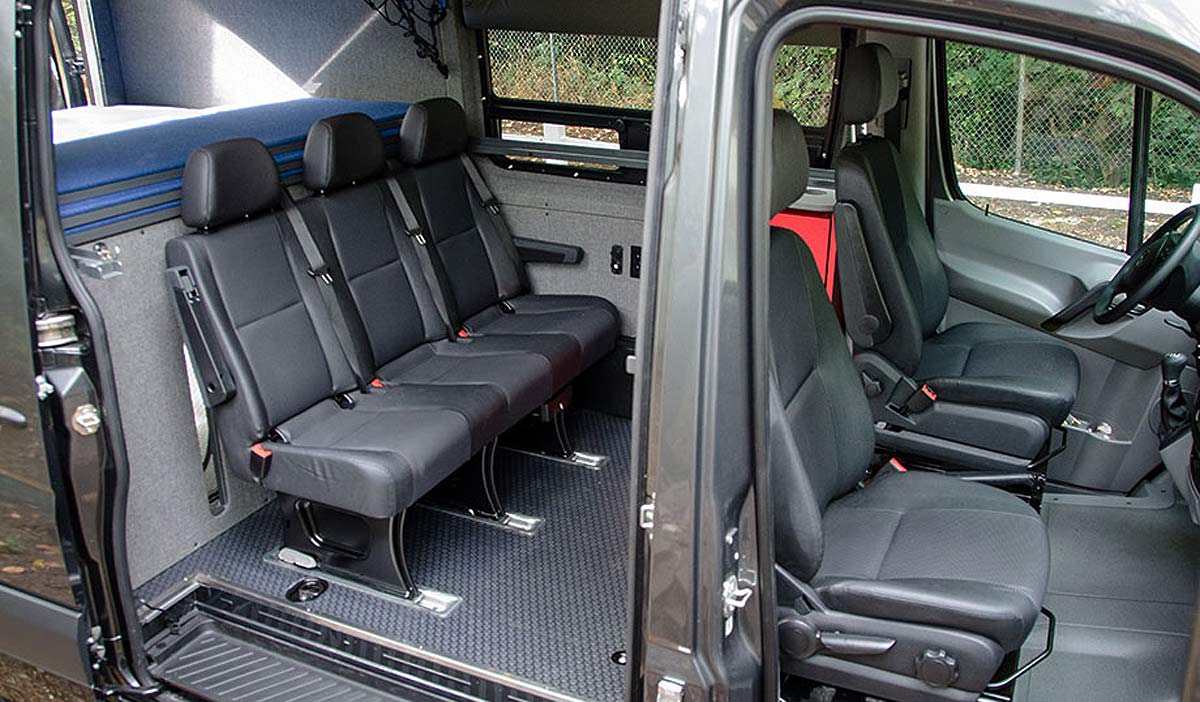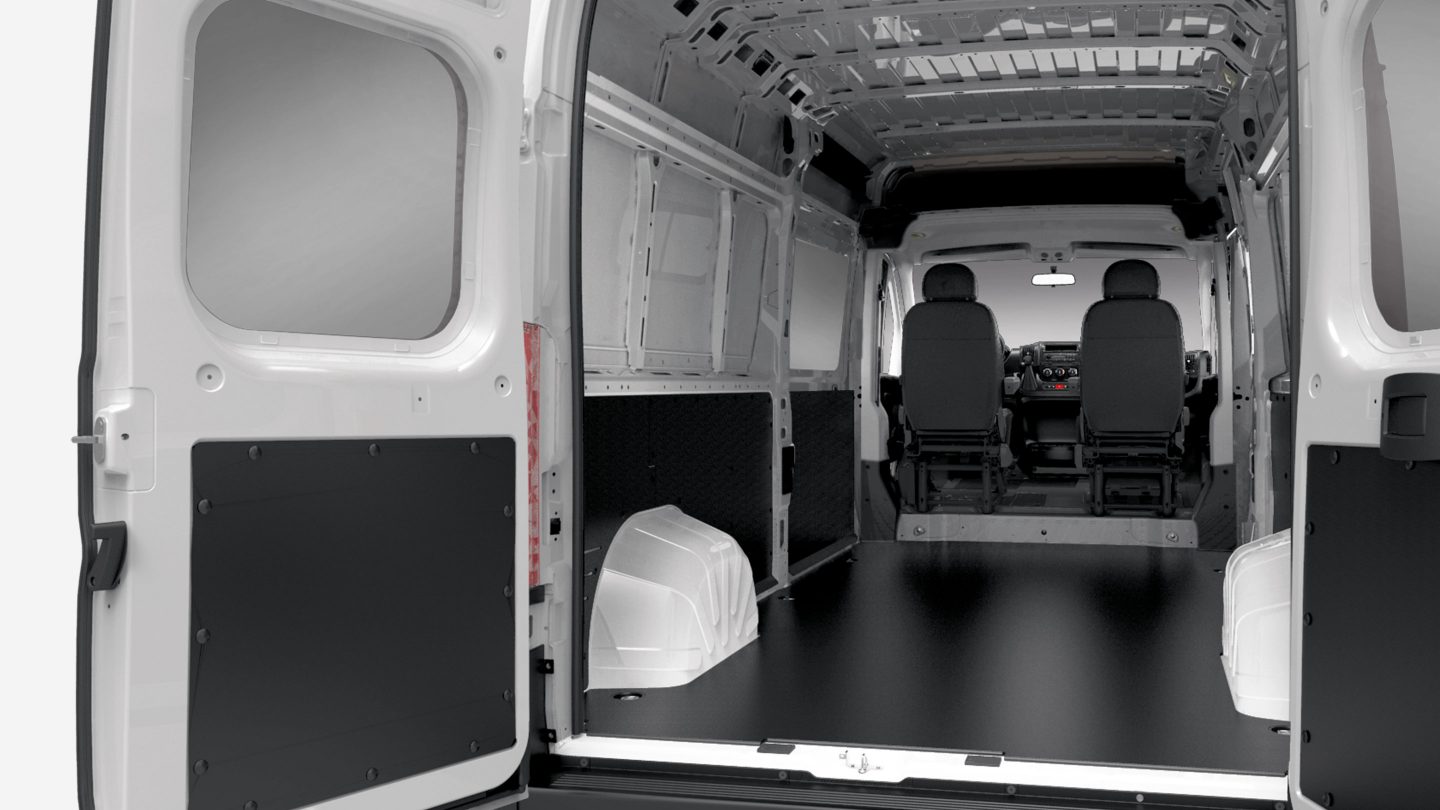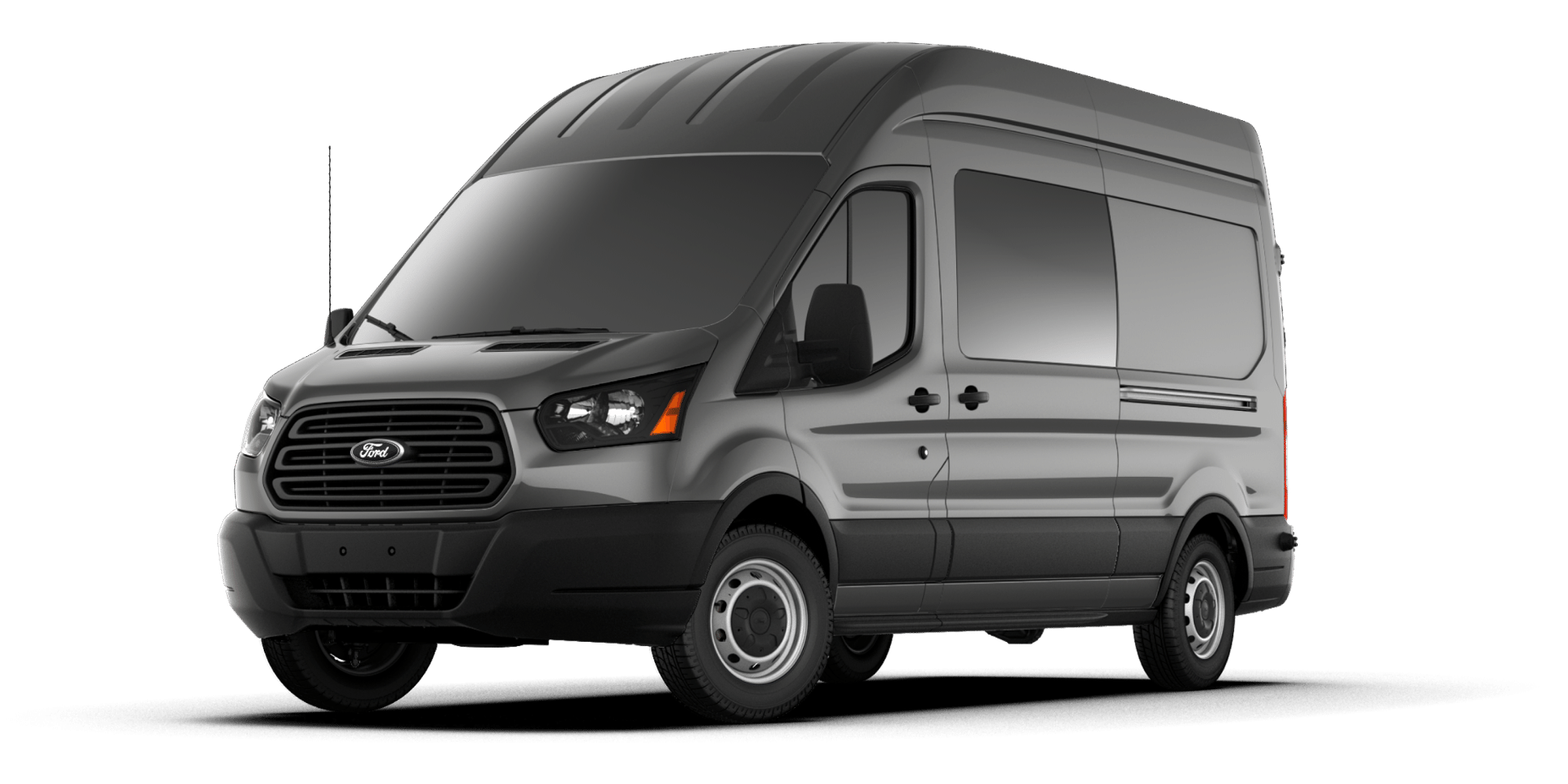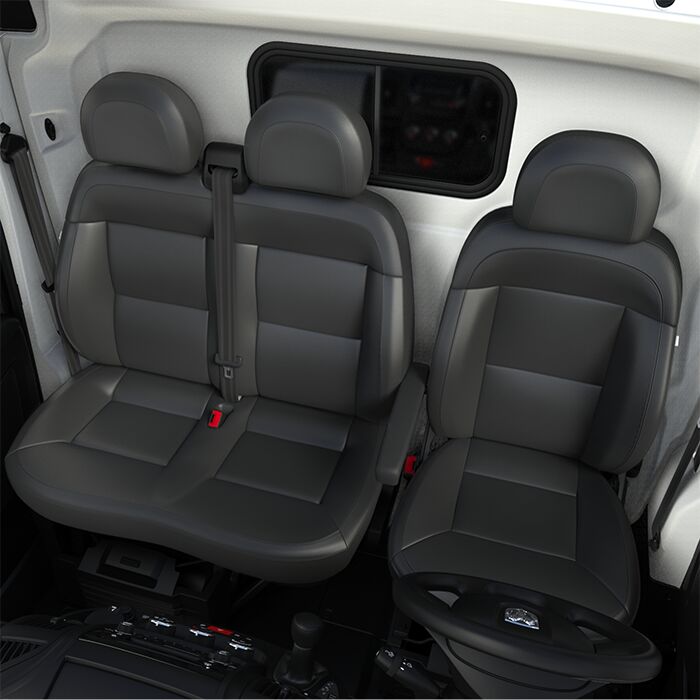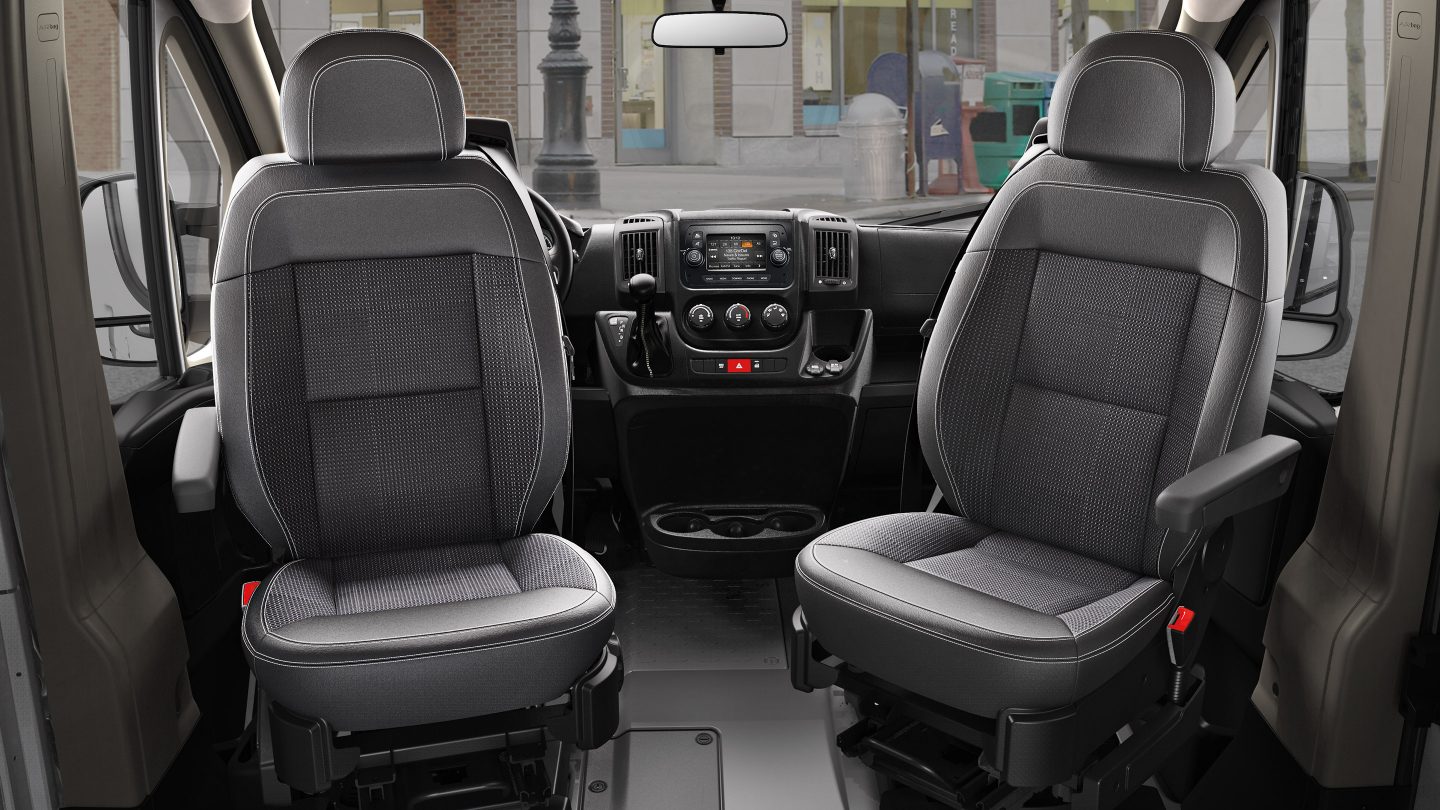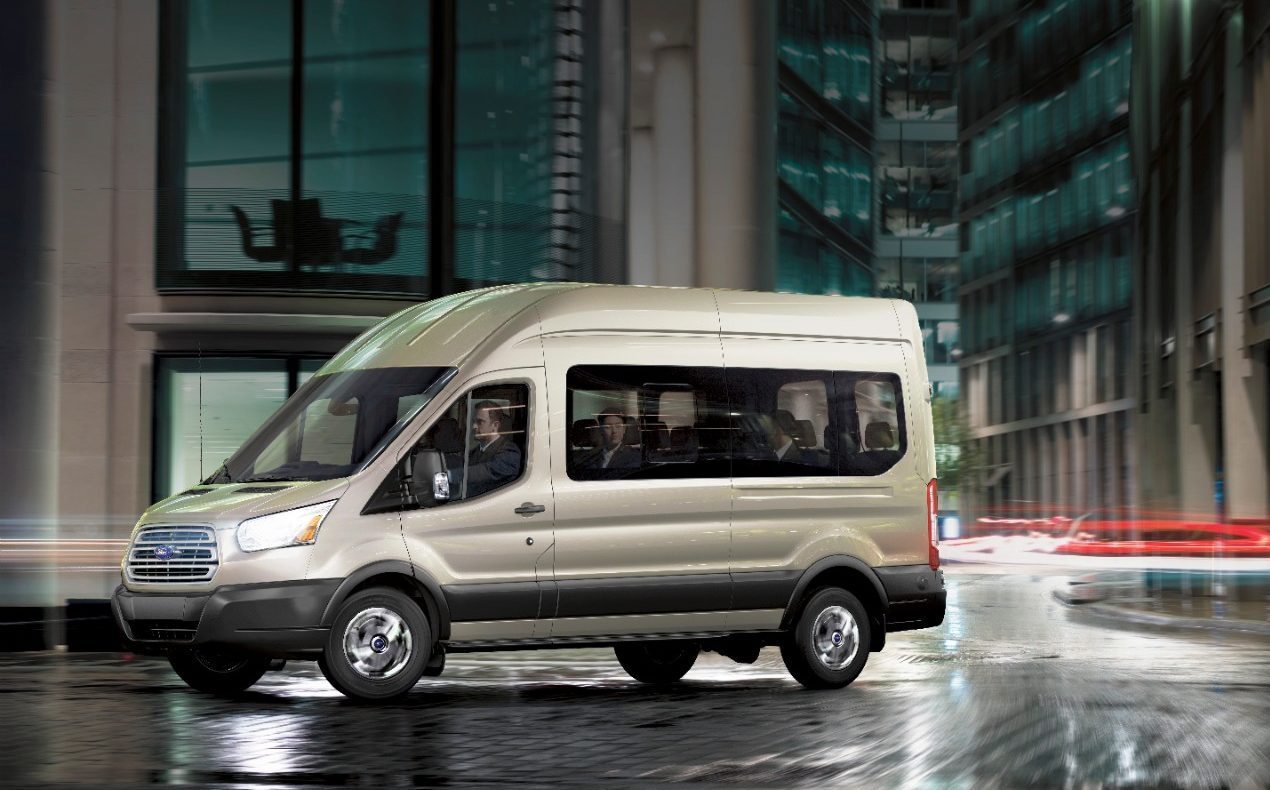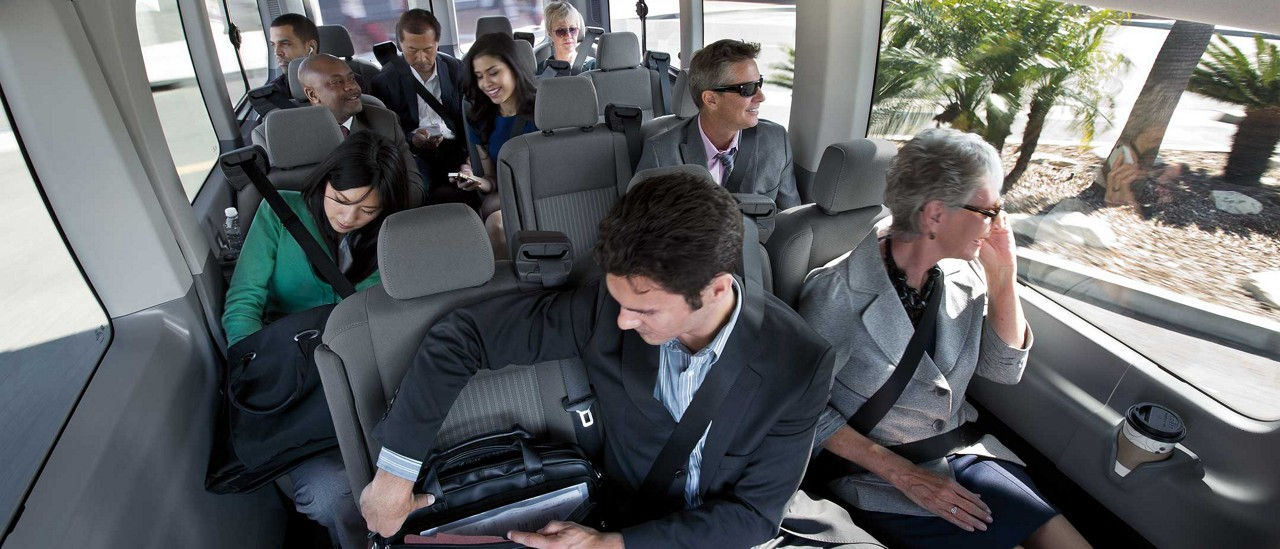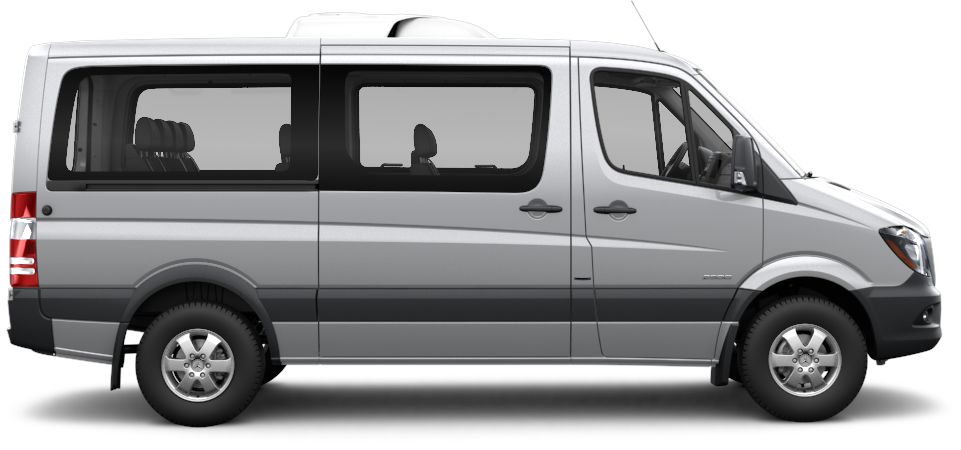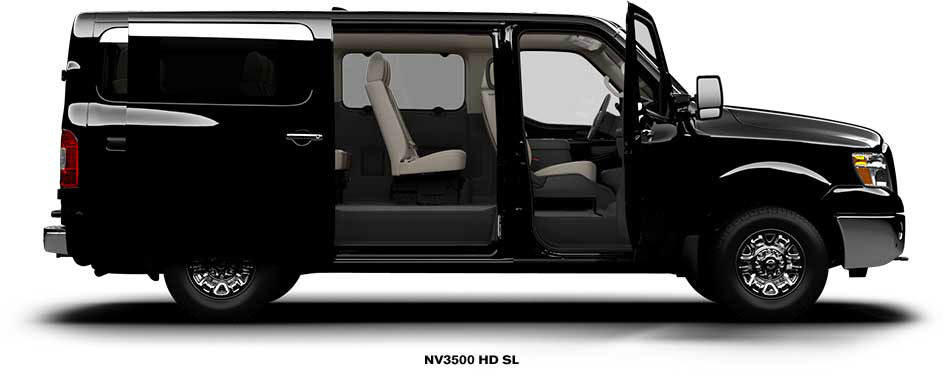If you’re like me, the thought of a cargo van is very appealing – just not to live in full time. Instead, I’m looking for something that can haul tons of gear, a number of friends and family, and when needed, still offer a place to sleep. I’d prefer all that to be inside the vehicle, while providing a place to change and to relax, all while making it as easy as possible to put in big miles on the highway. This has all led me to research the full size cargo vans that are available in the U.S., but one issue has stood out – seating.
Aftermarket seating options for adventure vans
Most cargo vans will look like the image above because, well, cargo. Two seats up front, and nothing in the back is the most common way you’ll find these vans. Especially if you’re looking at the used market. But just because there isn’t anything back there now, doesn’t mean there can’t be in the future.
The concept of adding additional seating to any vehicle is not a new one. People have been adding seats to customize vehicles for decades, but if you start doing some research online you’ll realize there is some grey area here in terms of safety and legality.
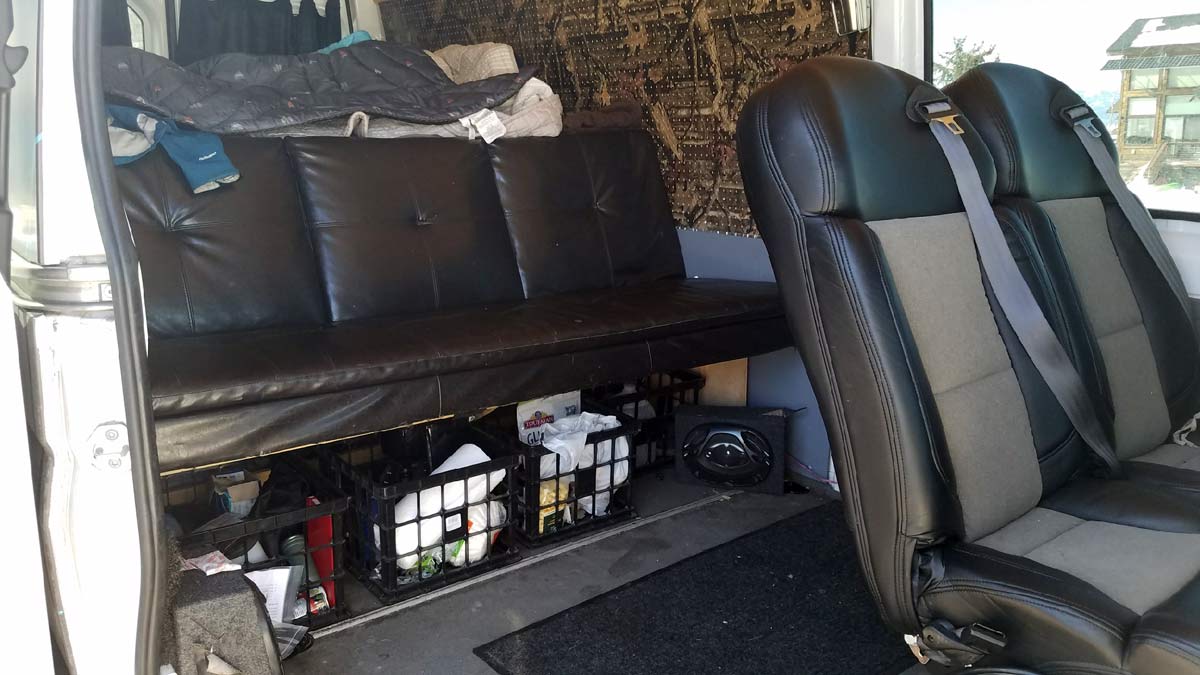
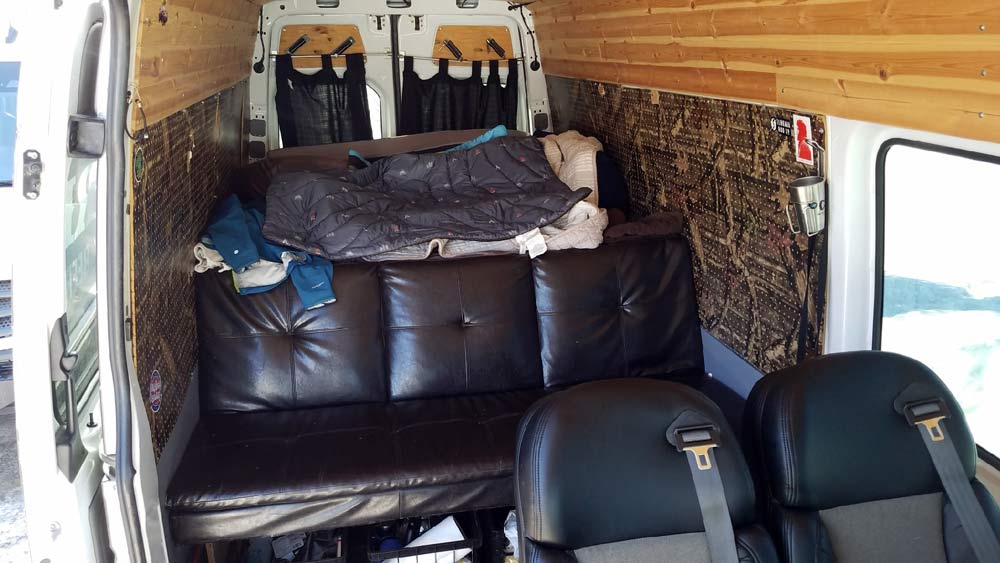
Is it legal to add seats to your van?
Specifically, I had read in a few places that if you add seats to a van, they won’t be covered by your insurance if you get into an accident. Obviously, that’s no good, but is it true? The best answer I could find came from my own insurance agent who said, “As long as they are normal car seats with seat belts, and installed correctly, you are fine. As long as the vehicle is eligible, you are covered.” However, I wouldn’t take this at face value – I’d strongly recommend consulting with your own insurance agent before upfitting any van.
When it comes to upfitting, or adding additional seating, you technically have three options:
- Installing it yourself.
- Going through an aftermarket up fitter.
- Having the dealer go through an upfitter before delivery if you’re buying new
Installing it yourself probably puts you back in that grey area since insurance companies could technically claim that it wasn’t installed by a “professional” and deny your claim in the event of an accident. Again, this is something you should consult with your own insurance agent on for clarity.
The second two are good options depending on the situation. Obviously, if you already own the van, the aftermarket upfitter will be the answer. For new, you have to decide if you want to pay dealer markup so you can bundle it all into one monthly payment, or pay out of pocket for the aftermarket up fitter to install them after you buy the vehicle.
The after-purchase aftermarket option will likely give you the most options as many car dealerships work with a very limited number of upfitters. Choose your own and the sky is the limit when it comes to seat choice. Want full leather recliners with heated and massaging seats? Done. Me? I’ll probably opt for vinyl to keep out the sweat and mud while keeping costs grounded.
Ford Transit Options
I was specifically curious about the seating options of the Ford Transit due to its optional dual sliding doors and glass on the front half of the van (this is also an option on the Ram Promaster). In this configuration, it is only available from the factory with the two seats up front, but one of my local Ford dealers said that they could solve the issue. They ended up quoting me $899 (installation included) for the addition of a three person bench seat in the rear (with three seat belts) that was also child-seat compliant.
Theoretically, this should be an option on just about any cargo van, but double check before diving in.
Mercedes Sprinter Options
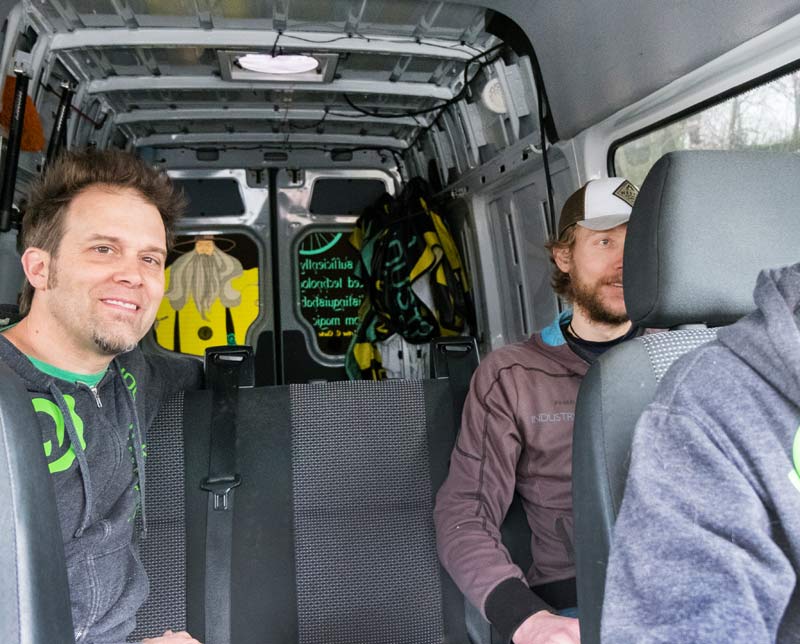
One of the best factory options is the Mercedes Benz Sprinter Crew Van. It is essentially the same configuration as the Transit above (minus the driver-side sliding door) with seating for five, but straight from the factory. Of course, you pay for that convenience with the base Crew Van starting out $3,500 more expensive than the base Cargo Van. However, if you’re looking for a 4×4 high roof van with room for friends, this might be the way to go. The premium for the Crew Van option plus the 4×4 option still comes out to be about $2-3k less than a new Ford Transit with additional seating and a Quigley 4×4 conversion (Quigley no longer converts used or pre-owned Transits, only new vans).
Ram Promaster Options
The Ram Promaster isn’t just the smallest of this style van, it also has the fewest factory seating options. We can’t imagine it will be a popular option for comfortable seating on long road trips, but Ram does offer a three-seater version of the Promaster, but all three seats are in the front. More likely, the popular option for the Ram would be the swiveling driver and passenger seats to make lounging inside -and getting into the back- more comfortable.
A representative for Ram confirmed that they do not offer any rear seating from the factory since their vans are reserved for cargo, but that there are many companies who provide upfitting services for customers. We also confirmed that for 2019, the full window vans will be available to dealers (currently only available to fleets).
Passenger Vans offer the most seats
The other possible option is going with one of the 8, 10, 12, or 15 passenger vans and removing the seats you don’t need. This option provides factory seating and allows you to pick and choose which exact seats you’d want to leave in the van (and you may even be able to sell the extra seats), but it does have some draw backs. First, there is definitely some work involved in removing the seats. You’ll probably need a special bit if you don’t already have a bunch of automotive tools, and you’ll also be left with an interior that isn’t as conducive to storing cargo in the back (lots of windows, seatbelts, seat mounts, etc.).
You’re also limited to what models you can choose since in the case of the Transit Passenger Wagon High Roof, the vans start out at the 250 level since they’re designed to haul the weight of a lot of people and luggage.
However, these are popular for people movers meaning there’s a higher chance of finding one used. In fact, the best deal on a full size, high roof cargo van I’ve seen was a 2016 Transit passenger wagon with 30k miles for $16k, and I’m kind of kicking myself for not scooping it up.
This is an option for used and new Sprinters as well, but if you were buying new it would make more sense to just get the crew version.
The Nissan NV is available in a passenger wagon as well, but sadly it is not available in a high roof. The same goes for the Chevy Express cargo van – you can find 12 and 15 passenger versions and remove most of the seats, but they are not available with a high roof model.
The seat of the question
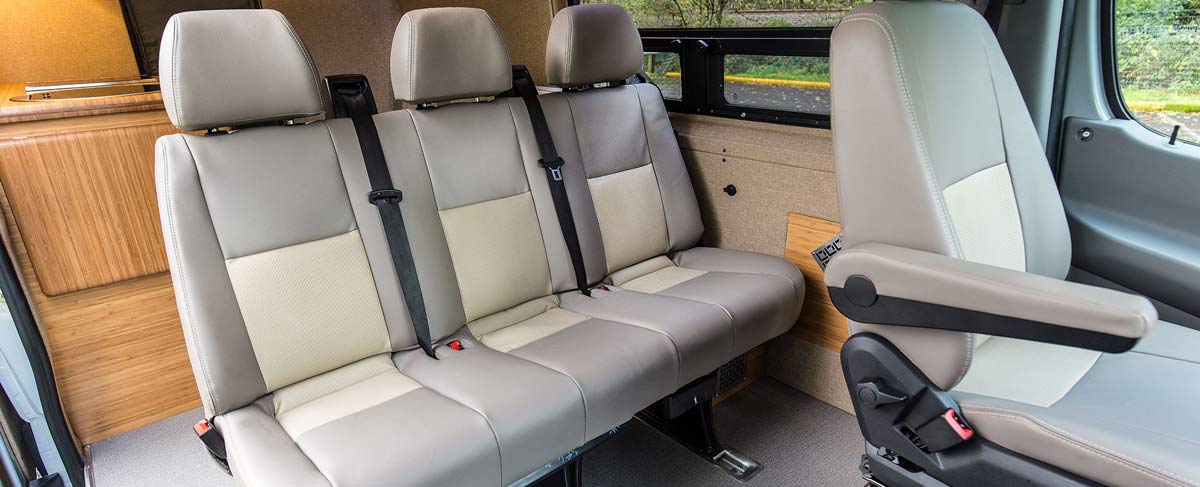
Ultimately, it’s clear that cargo vans are either designed to haul few people and a ton of cargo, or a ton of people with minimal cargo. It’s that in-between that still could use improvement. Technically, there’s a way to get what you want with almost any van, but it will depend on how much you want to spend and how much work you’re willing to put into it. We really only covered the “factory” type options here. Aftermarket conversions can do just about anything you want, and likely offer more comfortable seats. Truth be told, the factory bench seats are not very comfortable for long trips, and few if any will recline. If you’re building a family hauler for major road tripping, custom, reclining captain’s chairs in the second row would be our recommendation, with a bench or folding couch behind that.
The last thing to consider is if you’ll ever really need to remove those seats to move stuff instead of people. Do you prioritize comfort, or convenience? The Holy Grail is an adventure van that doubles as a family/friend hauler, that can also still be used as a true cargo hauler in a pinch.
